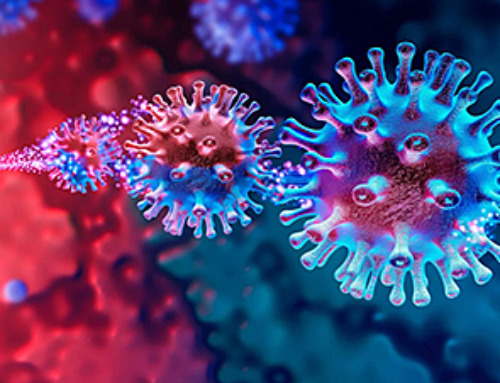China has withheld information about the possible natural origin of the virus. The WHO calls the lack of transparency “inexcusable”.

The Huanan market in the middle of the metropolis of Wuhan was at the center of the first corona outbreak: “The cases that are known are all around this market,” says Bernese virologist Volker Thiel. Since the beginning of the pandemic, he has been researching the coronavirus.
Accidental data discovery, great gain in knowledge
Now so-called environmental samples have appeared. The genetic data that can be read from these samples were available online for a short time on the research server GISAID, uploaded by Chinese researchers from the local epidemic institute CCDC. The French researcher Florence Débarre discovered it on the server rather by chance, and then evaluated it with colleagues.
I would be surprised if China itself does not want to know where the infections come from.
These are samples that were taken three years ago, right after the outbreak of the pandemic, in Huanan Market: swabs from walls, cages, in drains, so-called environmental samples. Now it is clear: China has been withholding this revealing data all along and from the world.
The WHO now reacts unusually clearly in the journal “Science”, calls for more transparency, and condemns the lack of it. “I can imagine that the WHO feels led around by the nose,” says Thiel. And further: “It would surprise me if China does not want to know for itself where the infections come from.”
You still don’t know everything
China is a modern research country and has the technical capabilities and knowledge to search for information in the right place with the right methods. From the point of view of virology, it is almost a matter of course where it is worth looking. Thiel says: “I can’t know for sure, but I think they have taken other samples besides these that we don’t know about yet.”
On live animals at the market, for example, on farms in the outskirts of the city. Thiel: “And if there is a suspicion that the virus was on certain farms, how did it get there?” Connections to wildlife must be clarified, Thiel continued.
I can imagine that the WHO is very disappointed.
The WHO now emphasizes, at least between the lines, that China can hardly pretend that there are no relevant samples at all these obvious places and times. “It’s unusually clear. And I can also imagine that the WHO is very disappointed. It was probably thought that China was relatively open,” says Thiel. However, this does not seem to be the case.
“The virus was there”
The WHO also emphasizes that key details are still missing about the work being done at the Wuhan Institute of Virology. The call for China to cooperate transparently with other countries and the WHO is therefore aimed at both possible starting points for the pandemic: the market and the laboratory.
The current state of knowledge, however, can be summarized as follows: “We have clear evidence that the virus was on this market. We also know that the animals that are susceptible to the virus were also there,” says virologist Thiel.
News
COVID-19 still claims more than 100,000 US lives each year
Centers for Disease Control and Prevention researchers report national estimates of 43.6 million COVID-19-associated illnesses and 101,300 deaths in the US during October 2022 to September 2023, plus 33.0 million illnesses and 100,800 deaths [...]
Nanomedicine in 2026: Experts Predict the Year Ahead
Progress in nanomedicine is almost as fast as the science is small. Over the last year, we've seen an abundance of headlines covering medical R&D at the nanoscale: polymer-coated nanoparticles targeting ovarian cancer, Albumin recruiting nanoparticles for [...]
Lipid nanoparticles could unlock access for millions of autoimmune patients
Capstan Therapeutics scientists demonstrate that lipid nanoparticles can engineer CAR T cells within the body without laboratory cell manufacturing and ex vivo expansion. The method using targeted lipid nanoparticles (tLNPs) is designed to deliver [...]
The Brain’s Strange Way of Computing Could Explain Consciousness
Consciousness may emerge not from code, but from the way living brains physically compute. Discussions about consciousness often stall between two deeply rooted viewpoints. One is computational functionalism, which holds that cognition can be [...]
First breathing ‘lung-on-chip’ developed using genetically identical cells
Researchers at the Francis Crick Institute and AlveoliX have developed the first human lung-on-chip model using stem cells taken from only one person. These chips simulate breathing motions and lung disease in an individual, [...]
Cell Membranes May Act Like Tiny Power Generators
Living cells may generate electricity through the natural motion of their membranes. These fast electrical signals could play a role in how cells communicate and sense their surroundings. Scientists have proposed a new theoretical [...]
This Viral RNA Structure Could Lead to a Universal Antiviral Drug
Researchers identify a shared RNA-protein interaction that could lead to broad-spectrum antiviral treatments for enteroviruses. A new study from the University of Maryland, Baltimore County (UMBC), published in Nature Communications, explains how enteroviruses begin reproducing [...]
New study suggests a way to rejuvenate the immune system
Stimulating the liver to produce some of the signals of the thymus can reverse age-related declines in T-cell populations and enhance response to vaccination. As people age, their immune system function declines. T cell [...]
Nerve Damage Can Disrupt Immunity Across the Entire Body
A single nerve injury can quietly reshape the immune system across the entire body. Preclinical research from McGill University suggests that nerve injuries may lead to long-lasting changes in the immune system, and these [...]
Fake Science Is Growing Faster Than Legitimate Research, New Study Warns
New research reveals organized networks linking paper mills, intermediaries, and compromised academic journals Organized scientific fraud is becoming increasingly common, ranging from fabricated research to the buying and selling of authorship and citations, according [...]
Scientists Unlock a New Way to Hear the Brain’s Hidden Language
Scientists can finally hear the brain’s quietest messages—unlocking the hidden code behind how neurons think, decide, and remember. Scientists have created a new protein that can capture the incoming chemical signals received by brain [...]
Does being infected or vaccinated first influence COVID-19 immunity?
A new study analyzing the immune response to COVID-19 in a Catalan cohort of health workers sheds light on an important question: does it matter whether a person was first infected or first vaccinated? [...]
We May Never Know if AI Is Conscious, Says Cambridge Philosopher
As claims about conscious AI grow louder, a Cambridge philosopher argues that we lack the evidence to know whether machines can truly be conscious, let alone morally significant. A philosopher at the University of [...]
AI Helped Scientists Stop a Virus With One Tiny Change
Using AI, researchers identified one tiny molecular interaction that viruses need to infect cells. Disrupting it stopped the virus before infection could begin. Washington State University scientists have uncovered a method to interfere with a key [...]
Deadly Hospital Fungus May Finally Have a Weakness
A deadly, drug-resistant hospital fungus may finally have a weakness—and scientists think they’ve found it. Researchers have identified a genetic process that could open the door to new treatments for a dangerous fungal infection [...]
Fever-Proof Bird Flu Variant Could Fuel the Next Pandemic
Bird flu viruses present a significant risk to humans because they can continue replicating at temperatures higher than a typical fever. Fever is one of the body’s main tools for slowing or stopping viral [...]





















